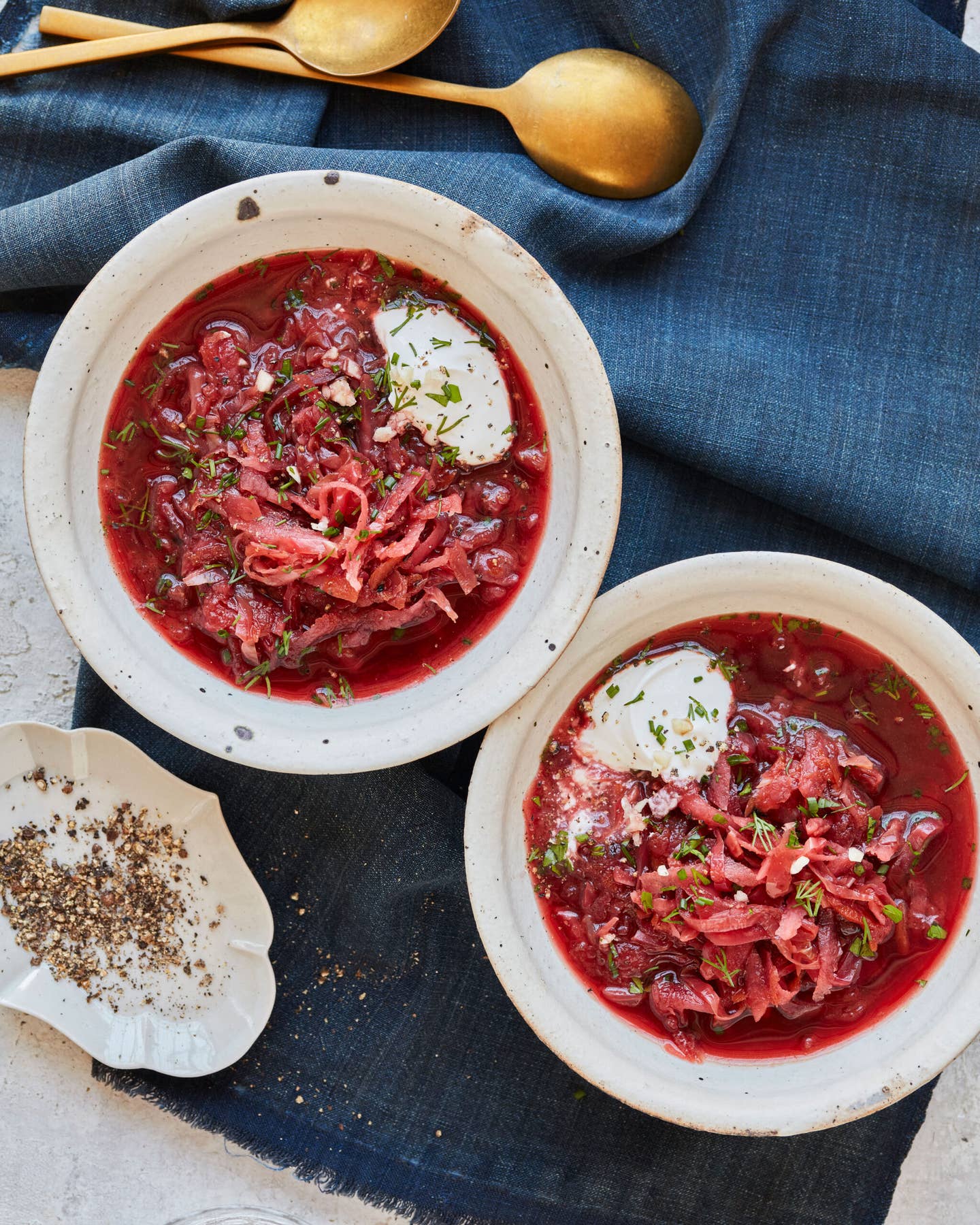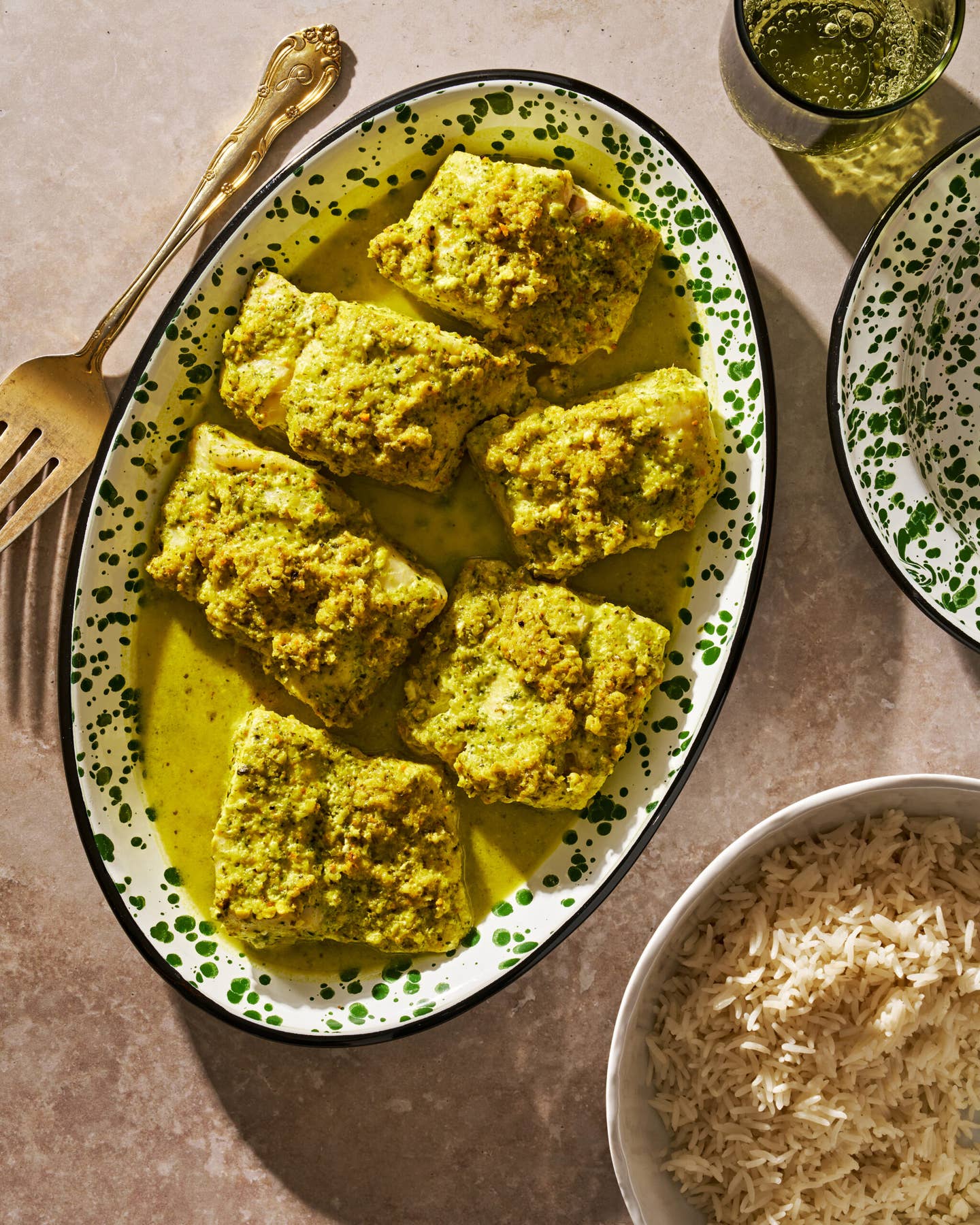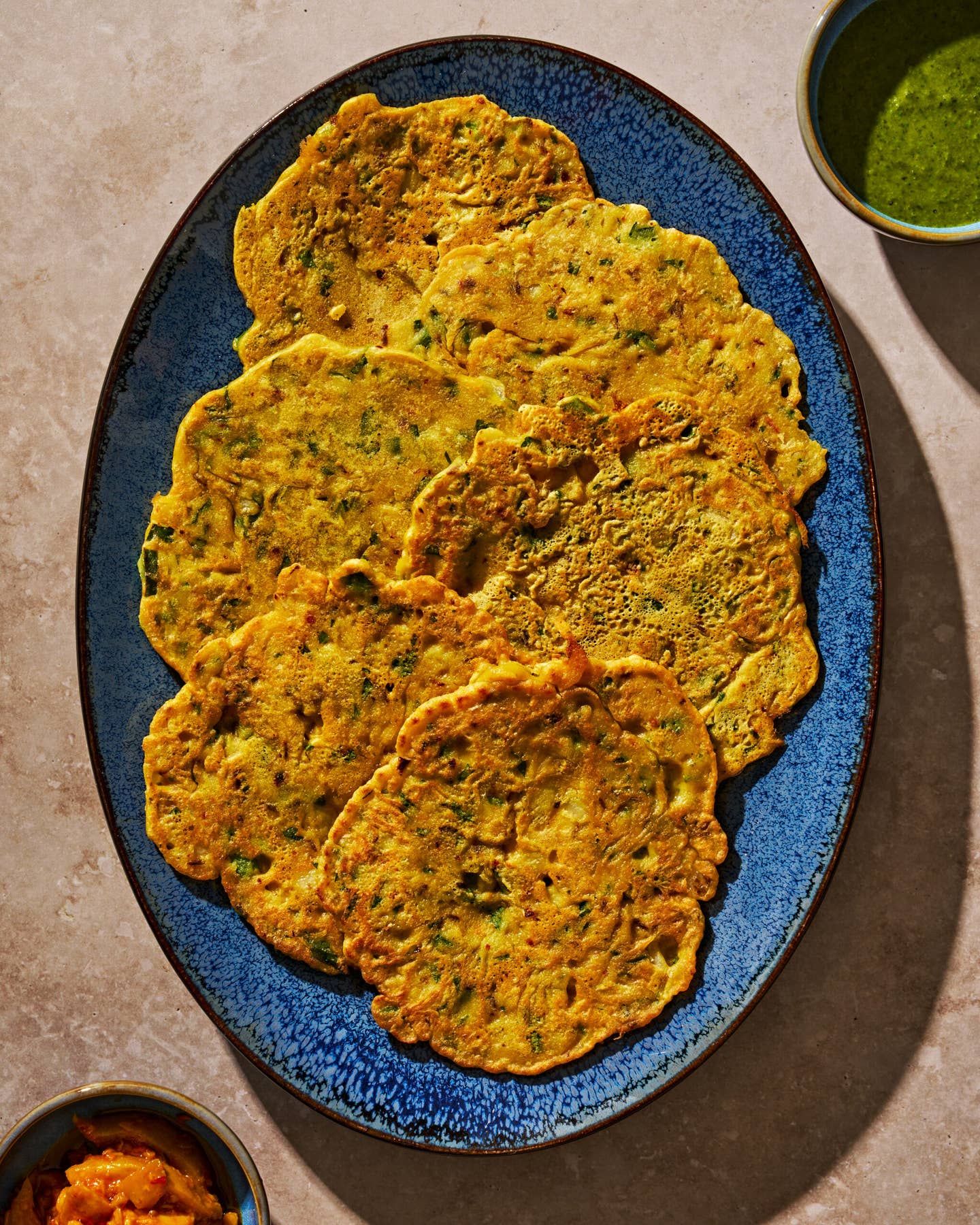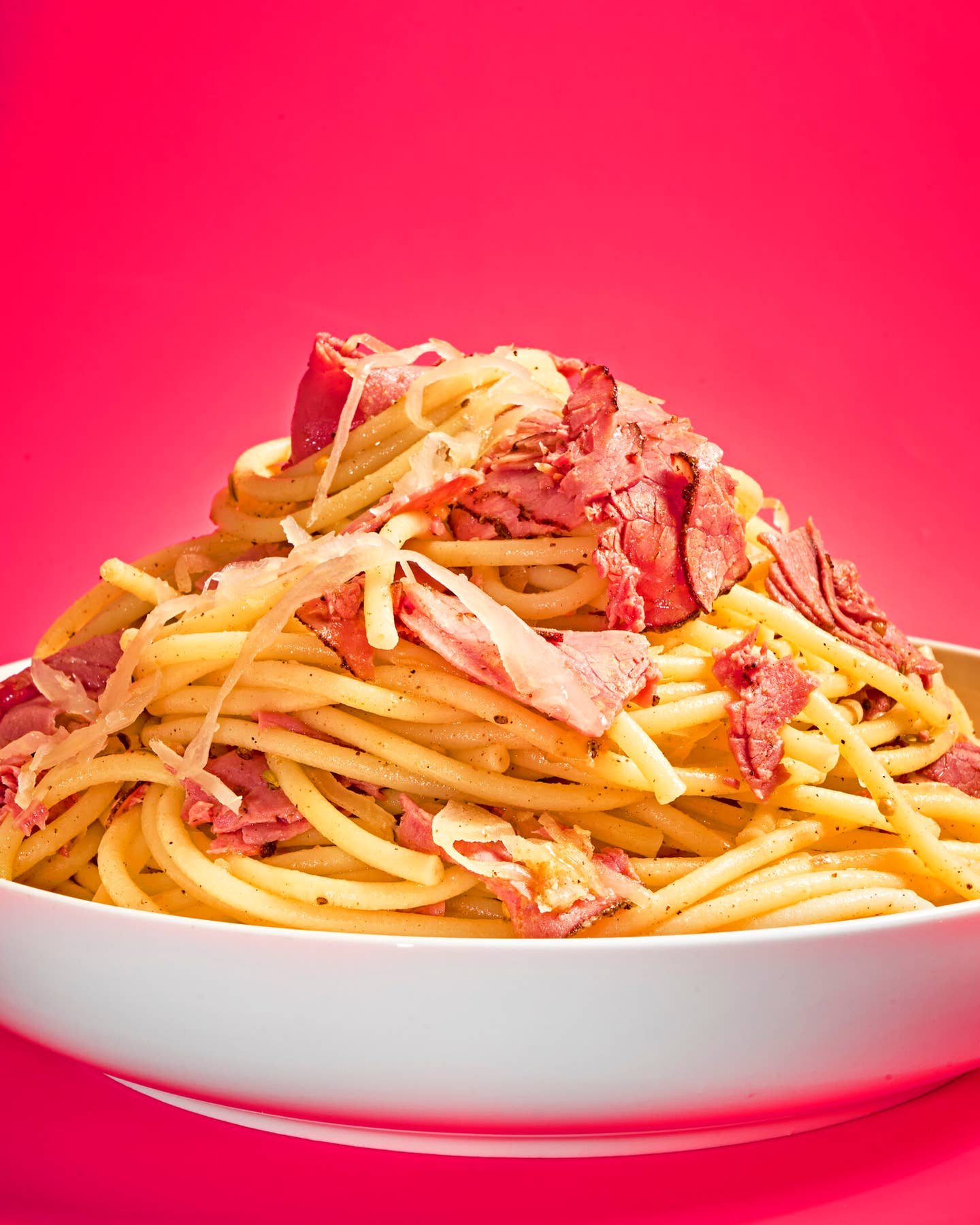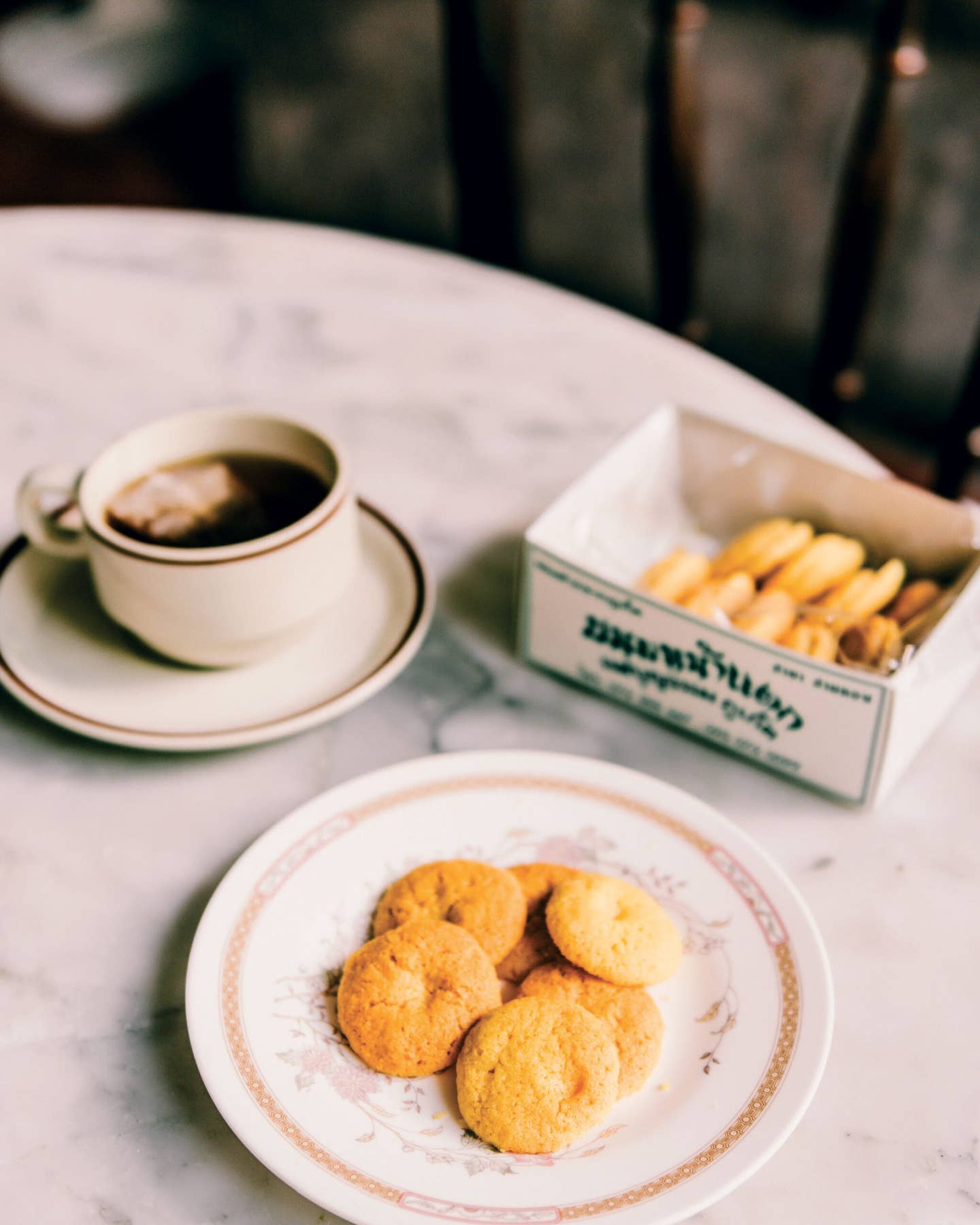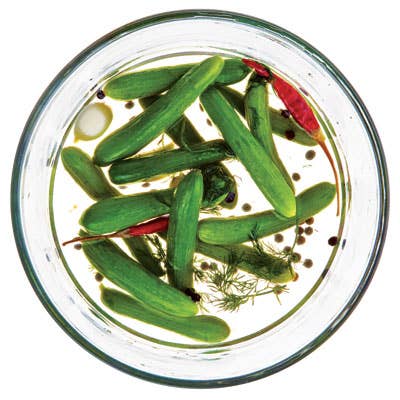
Most commercial pickles are preserved with vinegar, which is the product of one kind of fermentation. But sour pickles develop their complex flavor thanks to lactic fermentation, the process by which the naturally occurring bacteria Lactobacillus transforms and preserves foods, usually in a brine. The balance of salinity is key: You want enough salt to get a nice, crisp pickle and to prevent the growth of pathogens or mold, but not so much that the pickles are unpleasant to eat. Traditional techniques for creating firm pickles include adding grape leaves, oak leaves, or horseradish leaves—all rich in tannins, which prevent the pickles from going soft—to the brine. This recipe first appeared in our October 2011 issue along with Sara Dickerman's article Preserving Plenty.
Ingredients
- 1⁄2 cup packed dill fronds
- 1 tsp. whole black peppercorns
- 10 cloves garlic, peeled
- 5 dried chiles de árbol
- 1 fresh grape leaf (optional)
- 1 1⁄2 lb. (3–4″-long) mini gherkins
- 6 tbsp. kosher or sea salt
- 6 cups filtered water, warmed
Instructions
Step 1
Keep Reading
Continue to Next Story
